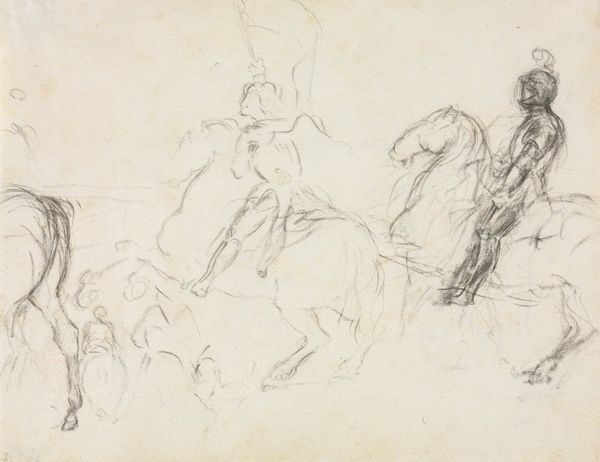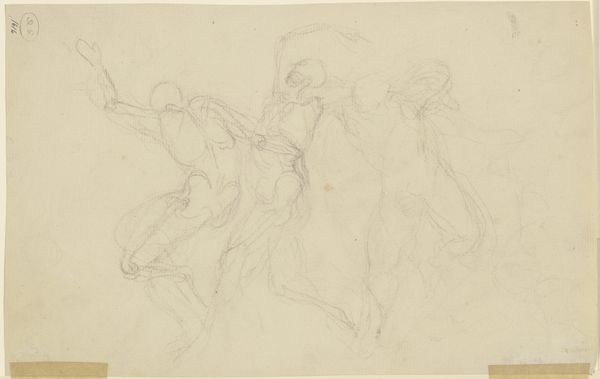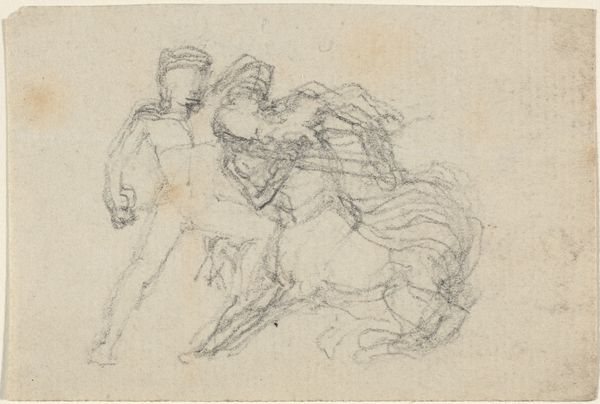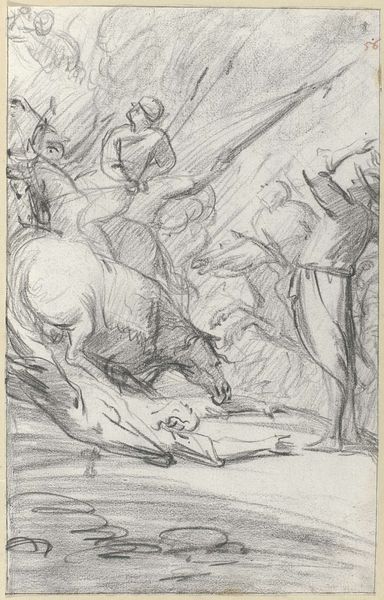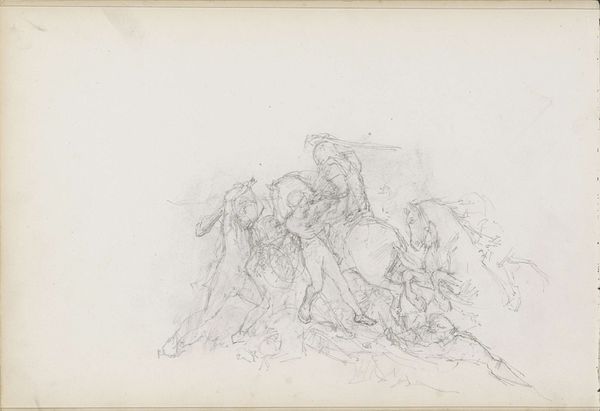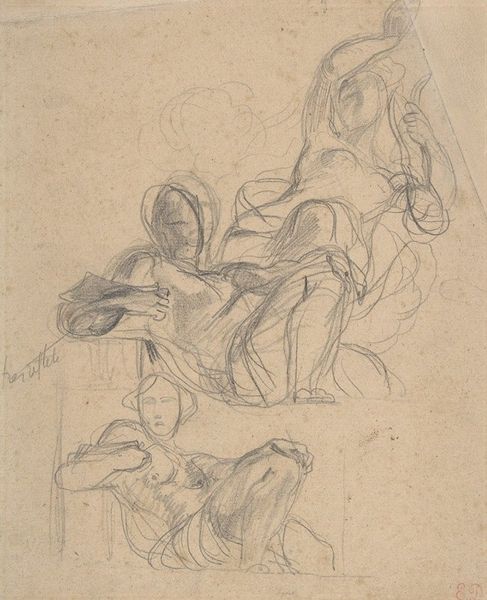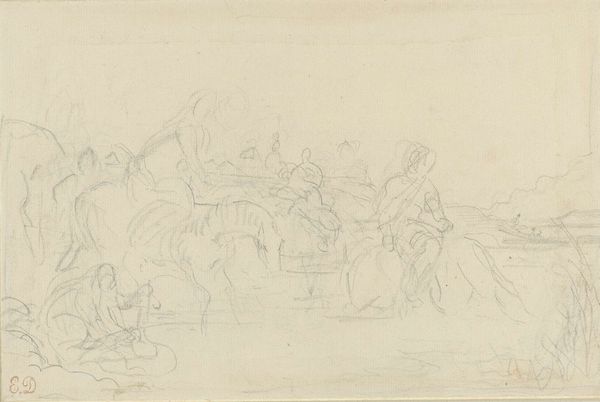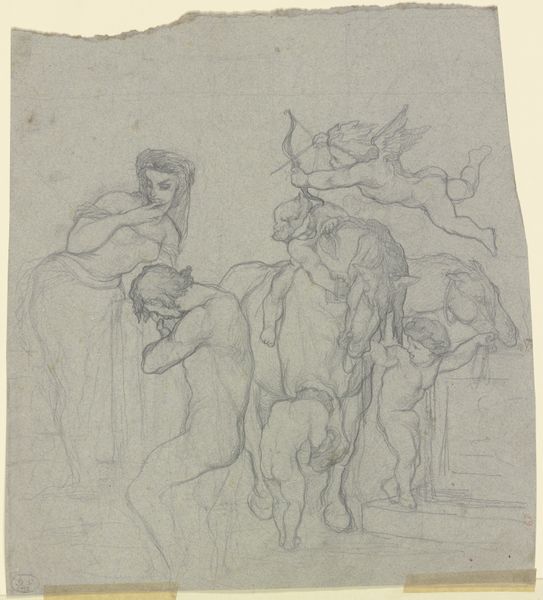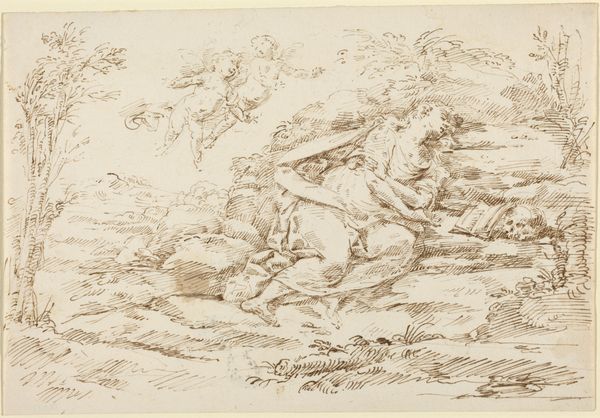
drawing, pencil
#
drawing
#
pencil sketch
#
landscape
#
figuration
#
romanticism
#
pencil
#
pencil work
Copyright: Public Domain: Artvee
Editor: Here we have Théodore Géricault’s "Charioteer and Horseman," likely created between 1791 and 1824, using pencil. What strikes me most is the sheer dynamism, even in such a seemingly simple sketch. What do you see in this piece? Curator: Oh, darling, this isn't just a simple sketch; it's a whispered conversation between Géricault and the ghost of classical grandeur. Notice how he captures the raw energy of the horses, that almost frantic pace. Do you sense how the charioteer, a barely defined figure, is struggling to contain that wildness? Editor: I do. It's like controlled chaos, even though it's just a drawing. Is it typical of his other works? Curator: Exactly! That tension, that friction, is pure Géricault. Think about "The Raft of the Medusa" – that same struggle against overwhelming odds, the raw human emotion bursting through. But here, in this little pencil dance, he’s distilling it. A dog leaps ahead as a kind of visual prelude, suggesting something of a hunt. And look at the figures themselves, classically rendered, almost sculptural, but roughened with Romantic fervor. Don’t you think it almost echoes ancient friezes? Editor: Now that you mention it, it does, with a frenetic urgency! Curator: Precisely! And perhaps it invites us to consider the tension that we sense between reason and passion that played such a major role in the artist's personal life! Do you know he once rode a horse right into a Parisian salon? Some say to express love for a woman but… alas I do not know. Editor: No way! Well, I'll certainly look at Géricault's work differently now, picturing him and his love of horses galloping across all his works. Thanks. Curator: My sweet friend, I am pleased to have brought him a little bit more to life for you. Now, go, look closer, always look closer!
Comments
No comments
Be the first to comment and join the conversation on the ultimate creative platform.
